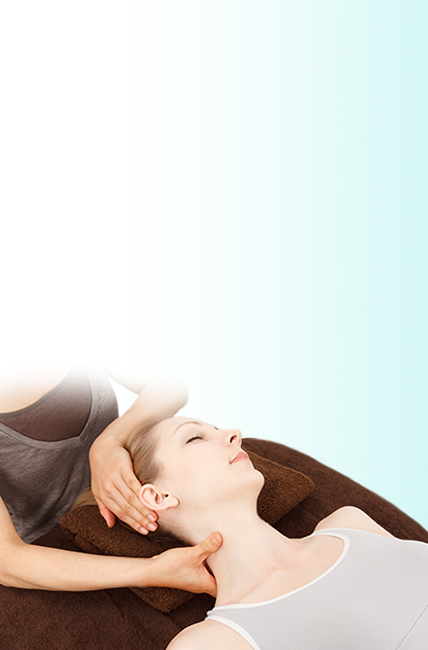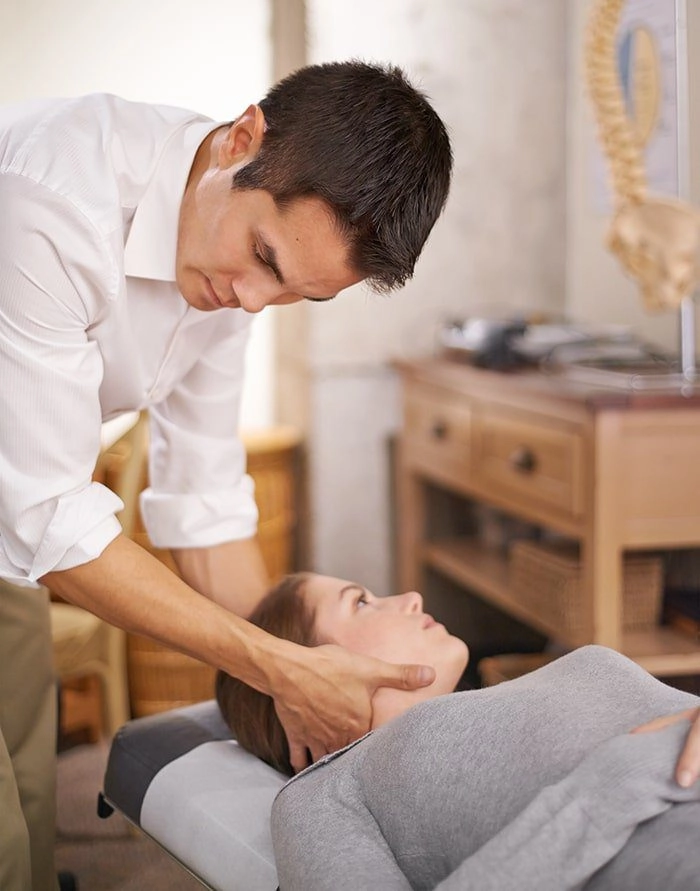

Chiropractic Care for Headache and Migraine in Anchorage, AK
Headache and Migraine Natural Pain Relief
Do you suffer from persistent headaches? Or worse yet, the recurring migraine? We know how painful those can be. But there is hope.
To a certain extent, headaches and migraines are still mysterious. Science doesn’t fully understand them yet, but we’ve dealt with them long enough to know how to help alleviate them. And that’s probably a little more important.
As for what differentiates a headache from a migraine, it is mainly that a migraine is more serious and often comes with other symptoms like vomiting, nausea, and very severe pain.
Fortunately, though, we have tools and techniques that can help you in either case. So, if you are seeking relief from headaches or migraines, Visit us at 8840 Old Seward Hwy E, Anchorage, AK. We can help.

What to Expect:
If you experience a headache 3+ times a week; or when exerting yourself, after suffering a head injury, or experiencing loss of certain bodily functions, you should seek out medical help.
Your First Visit
Identifying the correct type of migraine or headache is sometimes difficult because specific symptoms can vary from person-to-person and from attack-to-attack. Plus, it’s possible to be suffering from two or more at the same time.
Still, it’s not impossible. On your first visit, the chiropractor will diagnose your condition and decide how to proceed. The usual course of action for headaches and migraines typically includes some kind of conventional pain med, one of several other types of alternative remedies like chiropractic massage or yoga, and just being more mindful of your triggers.
Like the symptoms themselves, triggers for migraines and headaches usually vary from person-to-person. Therefore, you are the best guide to determine what your triggers are. Once you do so, you can take steps to mitigate them.
Benefits of Regular Chiropractic Treatment for Headaches and Migraines
Of course the ultimate weapon against all forms of disease is knowledge. If you are regularly suffering from headaches and/or migraines, a chiropractic office, like Better Health Alaska Chiropractic, can be a great resource for you.
From the start, we can sort out what type of headache you are experiencing, then move from there to determine how best to manage it. If pain meds will suffice, we can advise that. If chiropractic care or physical therapy are required, we can help there, too. Whatever type of headache it is, we have the knowledge of how best to combat it.
If your headache or migraine has become intolerable, and you want long-lasting pain relief, then contact us at 907-346-5255. We can help.
Visit Better Health Alaska
South Anchorage
- 8840 Old Seward Hwy E, Anchorage, Alaska 99515
- Phone: 907-346-5255
- Open Hours: 9AM to 7PM
Headaches: Causes, Types & Pain Relief
What Is a Headache?
Good question – the truth is we still don’t fully understand what they are or what exactly causes them. It’s interesting because the brain itself has no nerve endings and therefore can’t feel or experience pain. Yet, during a headache, it’s generating pain signals in surrounding tissues, blood vessels, and nerves.
What Causes Headache Pain?
A couple of decades ago we knew relatively little about headaches, but the picture is becoming more complete through modern medicine. We’ve broken down the 14 types of headaches (more info below), and have methods of getting them to go away. But, there’s such a wide variety of potential secondary causes – underlying medical conditions, high blood pressure, anxiety/depression/PTSD, stress, blood clots, etc. Primary headaches are stand-alone, not caused by something else outside the structures of the head.
What Are the Different Types of Headaches?
- Sinus Headache: caused by inflamed sinus cavities.
- Cluster Headache: happen in clusters, for minutes to hours.
- Tension Headache: most common form, episodic or chronic.
- Migraine Headache: second most common, last from hours to days.
- Cervicogenic Headache: referred pain, caused by a cervical issue.
- Thunderclap Headache: sudden and severe, last from 1-10 minutes.
- Ice Pick Headache: short, feels like brief stabs of pain in the head.
When to See a Doctor for Headache?
A great question. Listen, you know yourself and your body. An occasional headache is extremely common, but when you experience intense headaches 3+ times in one week or any of these more serious symptoms don’t hesitate to seek medical attention.
- Loss of Control: When the pain of a headache causes you to lose control and normal function, dizziness, lose track of your feet, trouble speaking, vision issues, vomiting, etc.
- Head Injuries: Recently hit your head pretty hard or were you involved in a vehicular incident? If you shrug it off, but then begin experiencing serious headaches, seek help.
- Exertion: If you experience headaches after or during a workout, sex, walking, hiking, etc., this could be a sign of a serious underlying condition.
How to Get Rid of Headache?
Because of how common they are, headache relief is a big topic and there are tons of conventional (pain meds) and alternative headache remedies to choose from. If you aren’t experiencing any concerning symptoms, and just want to know how to relieve a mild headache we’d say to minimize light, try to relax, de-stress, and take a good hard look at your diet. Chiropractic adjustments and chiropractic massage are also very effective ways to address spinal and muscular issues related to headaches. A combination of techniques is often the most efficient method for headache pain.
What Is the Difference Between Headache and Migraine?
Generally, a headache is less sudden and severe. Migraines also tend to come with other symptoms that may include nausea or vomiting, throbbing pain on one side of the head, light sensitivity, loss of vision and more.
What Is a Migraine?
Well, the dictionary definition is, “a recurrent throbbing headache that typically affects one side of the head and is often accompanied by nausea and disturbed vision.” The Migraine Research Foundation adds that, “It’s an extremely incapacitating collection of neurological symptoms that usually includes a severe throbbing recurring pain on one side of the head. However, in 1/3 of migraine attacks, both sides are affected. Attacks last between 4 and 72 hours and are often accompanied by one or more disabling symptoms.”
What Causes Migraine?
Honestly, like headaches, we still don’t know exactly. Our understanding of them is definitely evolving thanks to modern medical technology, studies, and patient histories. A portion of the many thousands of our patients since 1998 have dealt with migraines, so our chiropractors, massage therapists, and rehabilitation specialists are well-versed.
What Are The Signs & Symptoms of a Migraine?
Other than the general migraine format, they’re hard to deal with and treat because symptoms vary person-to-person and can also vary from attack-to-attack. What if you’re experiencing two kinds of migraines with different symptoms? Aside from the pain, the Migraine Research Foundation notes that most migraines are accompanied by, “visual disturbances, nausea, vomiting, dizziness, extreme sensitivity to sound, light, touch and smell, and tingling or numbness in the extremities or face.”
What Are the Different Types of Migraine?
We won’t dive 10 miles deep into the neuroscience and study of headaches and migraines here. Instead, let’s briefly look at some of the more common types we see around our Anchorage clinics.
- Ocular Migraine: Rare, involves visual disturbances like colors or lights, loss of vision.
- Hemiplegic Migraine: One side of the body becomes weak, can be confused with a stroke.
- Menstrual Migraine: Happens typically 2 days before period, to a few days after.
- Vestibular Migraine: Most people experience symptoms of vertigo with this migraine.
- Chronic Migraine: Typically experienced at least 8-15 days a month, for 3 months.
- Ophthalmic Migraine: Can cause loss of vision or blindness in one eye.
- Sinus Migraine: Think you’re having a sinus headache – 90% chance its migraine.
What Triggers Migraine?
Well, since we don’t always know the cause it’s hard to say. Although in most contexts, the term “triggers” is used differently than “cause.” We like to teach our patients about the auras (warning symptoms) involved in some migraines – flashes of light, emotional disturbances like depression or anxiety, blind spots, tingling sensations in the face or arms, even foods that trigger migraines and constipation. Only you can get a handle on what triggers your migraines. If you’re interested in migraine relief, and you’re in Alaska, stop by any Better Health Alaska clinic and we can help.
Conditions Helped by Chiropractors:
Same-Day Chiropractic Appointment. 10-Minute Wait Promise.
Better Health Alaska Chiropractors has helped thousands of patients get their life back through safe, effective, and cutting-edge treatments like the Alaska Back Pain Protocol. We use a multi-pronged, non-invasive approach to treat different conditions. And it’s done at a reasonable cost. We accept many types of insurance, and most insured patients pay $25 or less per visit. We even have options for the uninsured.

